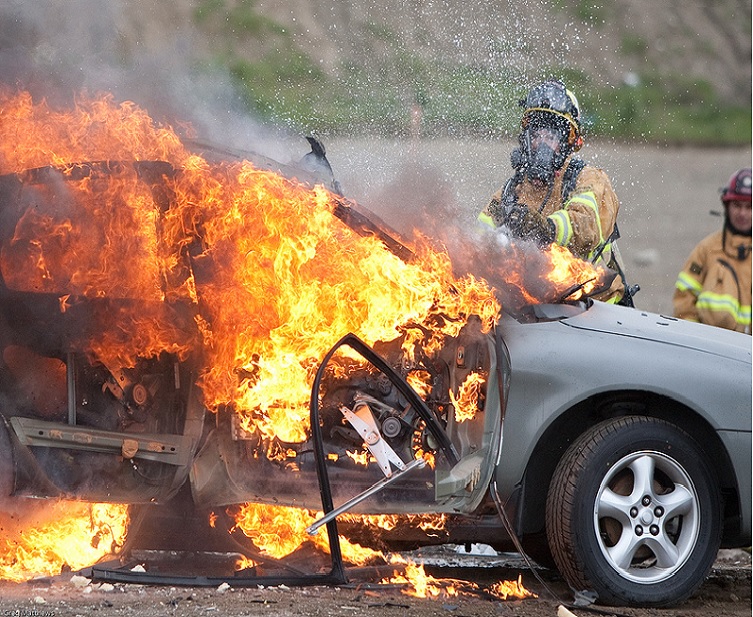This couple may win a Darwin Award for the decision to light a cigarette while transporting a
leaky propane tank, however the dangers of transporting gasoline (and other flammables) is very
real. Many of us have a plastic gas can in our garage or tool shed. When the lawn mower or
weed eater runs out of gas, what do most of us typically do? Grab the plastic gas can and drive
to the nearest gas station for a refill! Unfortunately, most plastic gas cans are made without a
safety feature called a flame arrester. This creates a dangerous situation which can result in
gasoline explosions.
A vehicle is full of electrical components, for example, power windows, the radio, power seats,
air conditioner etc. Gasoline fumes are highly flammable! When fumes ignite, the flames travel
back to the source of the fumes (ie the gas in the gas can) causing the gas can (without a flame
arrester) to explode.
A flame arrester works by removing heat from a flame and keeping the temperature of the fuel
on the other side of the arrester below its ignition point. The flame arrester mesh breaks the
flame into many flamelets, and the heat of these flamelets is transferred to the walls of the mesh.
Flame arresters were invented 200 years ago and are used today on water heaters, charcoal
lighter fluid and even Bacardi 151 rum. Flame arresters have also been used in metal gas
cans for 100 years and have effectively prevented explosions.
A Florida couple transporting a propane barbecue grill inside their SUV was injured Sunday after a
woman lit a cigarette, sparking an explosion. Read the full story
For car accident related injuries, call the Law Office of Keller, Keller & Caracuzzo.
